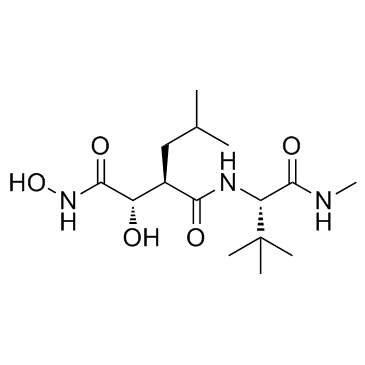The importance of estimating the therapeutic index in the development of matrix metalloproteinase inhibitors.
J Thomas Peterson
Index: Cardiovasc. Res. 69(3) , 677-87, (2006)
Full Text: HTML
Abstract
At least 56 matrix metalloproteinase (MMP) inhibitors have been pursued as clinical candidates since the late 1970's when the first drug discovery program targeting this enzyme family began. Some of these clinical candidates were pursued for multiple indications. However, the two primary indications that have been targeted are cancer (24 drugs) and anti-arthritis (27 drugs). Cardiovascular disease was listed as an indication for 10 drugs. Forty-six MMP inhibitors have been discontinued, 7 remain in clinical development, and only 1 (Periostat for periodontal disease) has been approved. Recently, negative phase II results were reported for the MMP inhibitor PG-116800, which was being evaluated as a treatment for post-ischemic myocardial remodeling to prevent heart failure. One major factor leading to the failure of PG-116800 and many of the other MMP inhibitors is the inadequate assessment of the therapeutic index, the ratio of dose required for efficacy vs. that for toxicology. This review describes the dose-limiting side effect that has hampered MMP inhibitor development (the musculoskeletal syndrome), cardiovascular clinical MMP inhibitor studies, a model of the therapeutic index using marimastat, and progress towards more selective MMP inhibitors not limited by the musculoskeletal syndrome.
Related Compounds
| Structure | Name/CAS No. | Molecular Formula | Articles |
|---|---|---|---|
 |
Marimastat (BB-2516)
CAS:154039-60-8 |
C15H29N3O5 |
|
Nestin depletion induces melanoma matrix metalloproteinases ...
2014-12-01 [Lab. Invest. 94(12) , 1382-95, (2014)] |
|
Interleukin 21 and Its Receptor Play a Role in Proliferation...
2015-01-01 [Cancer Genomics Proteomics 12 , 211-21, (2015)] |
|
Log-scale dose response of inhibitors on a chip.
2011-08-15 [Anal. Chem. 83(16) , 6148-53, (2011)] |
|
Matrix Metalloproteinase Inhibition as a Novel Anticancer St...
1997-01-01 [Pharmacol. Ther. 75(1) , 69-75, (1997)] |
|
Marimastat: the clinical development of a matrix metalloprot...
2000-12-01 [Expert Opin. Investig. Drugs 9(12) , 2913-22, (2000)] |